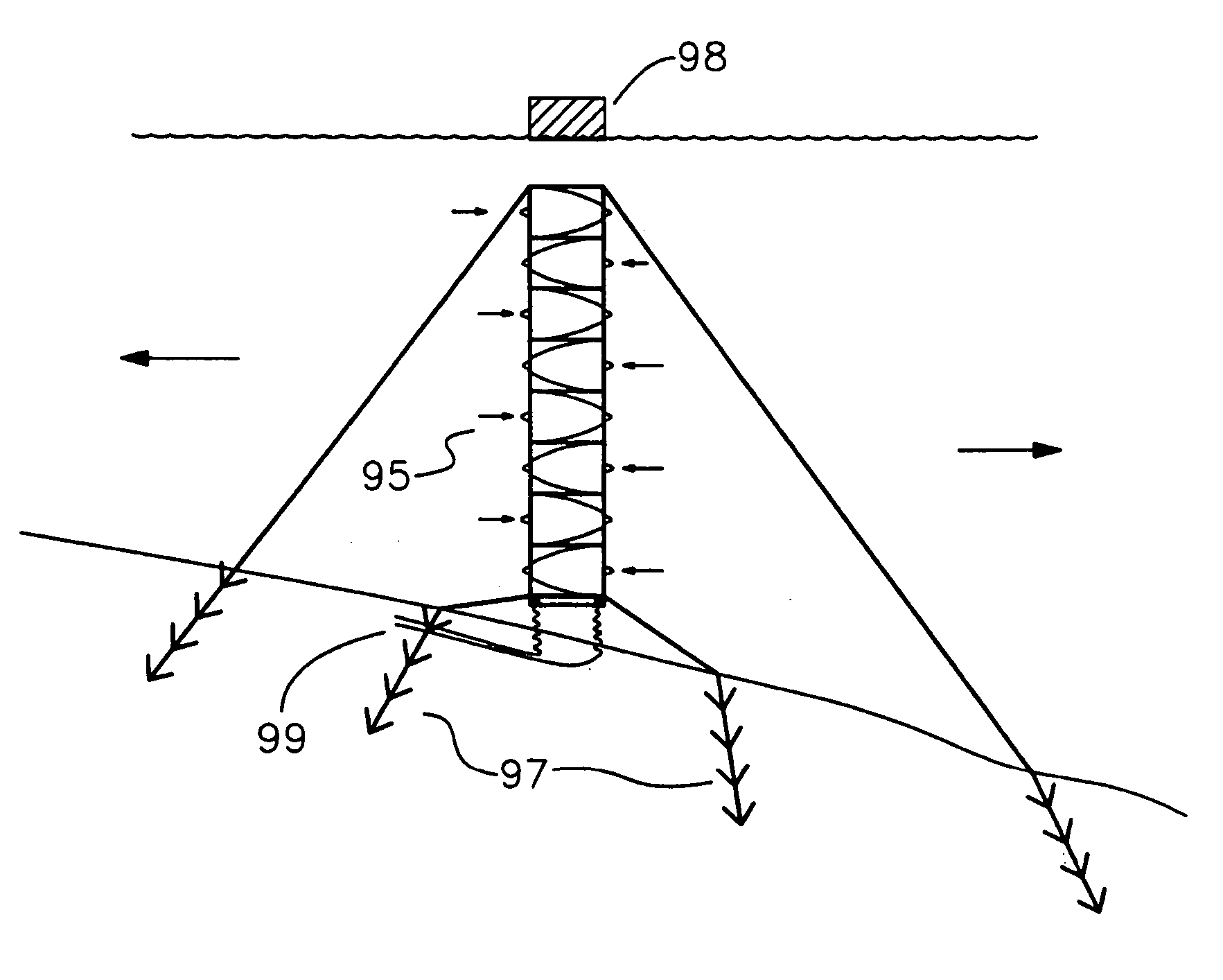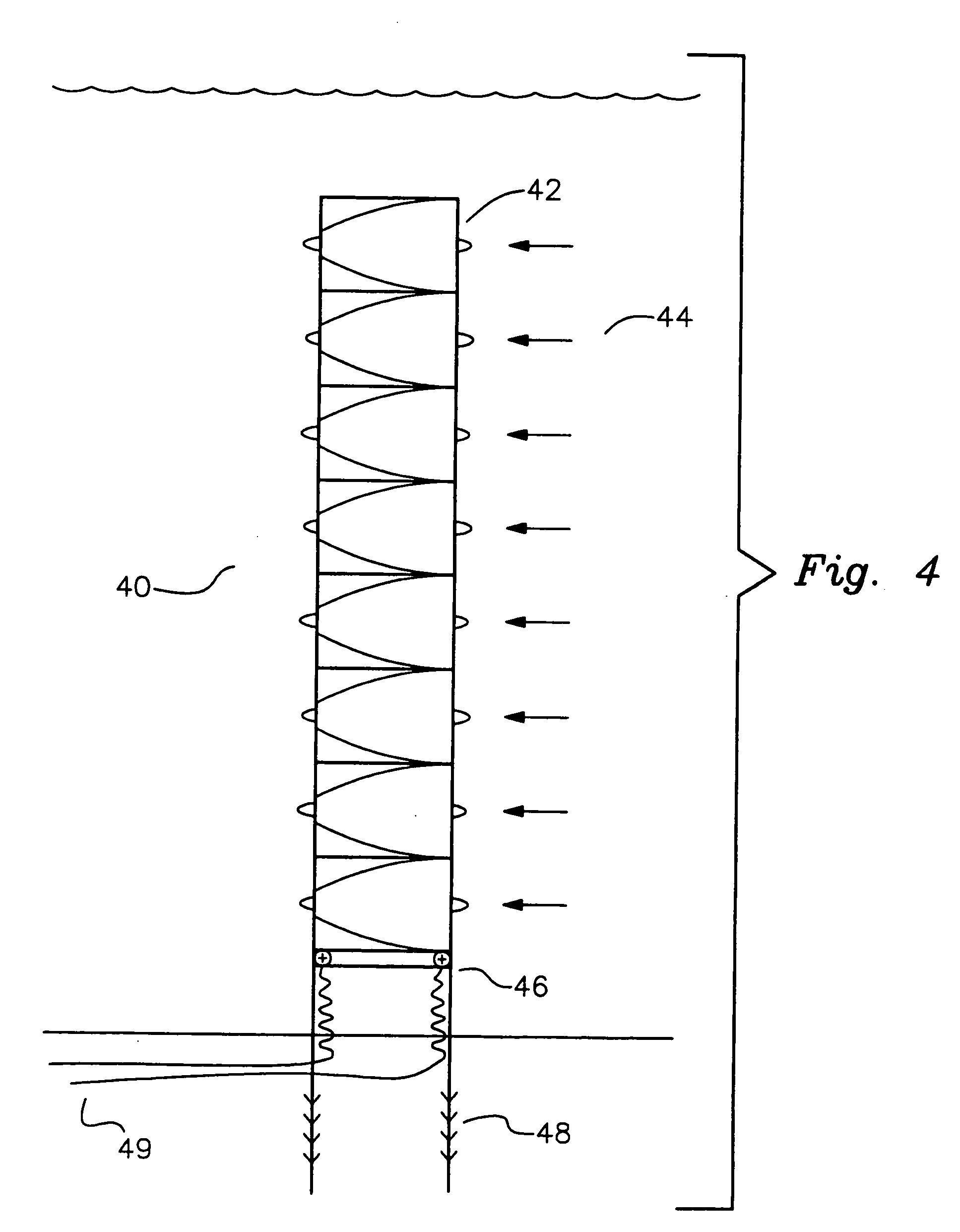Machine and system for power generation through movement of water
a technology of power generation and movement, applied in the direction of hydro energy generation, machines/engines, reaction engines, etc., can solve the problems of large-scale construction, inconvenient maintenance and repair, and inability to adapt to environmental conditions. , to achieve the effect of convenient maintenance or repair and easy adaptation to environmental conditions
- Summary
- Abstract
- Description
- Claims
- Application Information
AI Technical Summary
Benefits of technology
Problems solved by technology
Method used
Image
Examples
Embodiment Construction
[0033] Detailed descriptions of the preferred embodiment are provided herein. It is to be understood, however, that the present invention may be embodied in various forms. Therefore, specific details disclosed herein are not to be interpreted as limiting, but rather as a representative basis for teaching one skilled in the art to employ the present invention in virtually any appropriately detailed system, structure or manner.
[0034] Turning now to FIG. 1, there is shown a graph depicting average or mean current velocity 10 as a function of water depth 12 in the ocean deepwater zone. It is observed that velocity is relatively constant in deepwater zones, between some upper and lower limits, and for certain purposes may be a source of water energy applicable to the present invention. The Gulf Stream in the Atlantic Ocean and Kuroshio Current in the Pacific Ocean provide examples of steady deepwater current that the present invention could utilize to drive a plurality of cells arrayed ...
PUM
 Login to View More
Login to View More Abstract
Description
Claims
Application Information
 Login to View More
Login to View More - R&D
- Intellectual Property
- Life Sciences
- Materials
- Tech Scout
- Unparalleled Data Quality
- Higher Quality Content
- 60% Fewer Hallucinations
Browse by: Latest US Patents, China's latest patents, Technical Efficacy Thesaurus, Application Domain, Technology Topic, Popular Technical Reports.
© 2025 PatSnap. All rights reserved.Legal|Privacy policy|Modern Slavery Act Transparency Statement|Sitemap|About US| Contact US: help@patsnap.com



